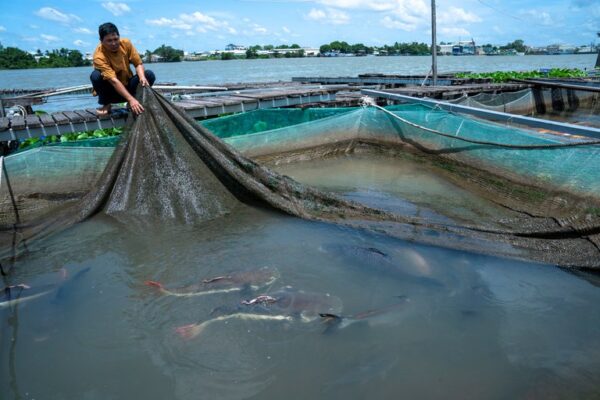US defense chief seeks to reassure Asia-Pacific partners
U.S. Secretary of Defense Lloyd Austin has reconfirmed Washington’s strong commitment to the Indo-Pacific, as well as to working with allies and partners in the face of growing rivalry with China. Austin spoke at the Shangri-La Dialogue annual security forum on Saturday, just a day after meeting with his Chinese counterpart to open lines of communication between the two world powers. This was the secretary’s third time to speak at the forum and likely his last as a U.S. presidential election in November may bring changes in defense diplomacy. The Indo-Pacific “has remained our priority theater of operations,” Austin said, seeking to brush off concerns that other security challenges in Ukraine and Gaza may have shifted U.S. attention. He stressed that Washington is “deeply committed” to the region, adding “We are all in. And we’re not going anywhere.” He went on to list a number of cooperation projects between the U.S and countries including Australia, Japan, India and the Philippines. Austin said that the U.S. “can be secure only if Asia is secure.” “The defense secretary’s speech shows that the dynamics of U.S. strategic partnerships may have changed because Washington has to balance different world regions, but not so much,” said Alexander Vuving, professor at the Daniel K. Inouye Asia-Pacific Center for Security Studies in Hawaii. Other factors that may have contributed to the slight shift, in Vuving’s opinion, are U.S. domestic politics and the “responses of regional states and non-state actors to the weakening of the current international order.” The Pentagon chief, meanwhile, emphasized what he called the “power of partnerships” amid a “new convergence” in the region. “This new convergence is about coming together, not splitting apart. It isn’t about imposing one country’s will,” Austin said in an apparent dig at China, “It isn’t about bullying or coercion. It’s about the free choices of sovereign states.” Beijing has been accused by some of its neighbors of acting aggressively in the South China Sea and the Taiwan Strait. In his keynote speech on Friday, Philippine President Ferdinand Marcos Jr. condemned “assertive actions that aim to propagate excessive, baseless claims through force, intimidation and deception,” believed to be committed by Beijing. The Philippines has accused Chinese coast guard vessels of harassing and preventing Filipino fishermen and law enforcement agencies from operating in the disputed waters of the South China Sea. While not mentioning China, Austin said that “the harassment that the Philippines has faced is dangerous” and the peaceful resolution of disputes should be achieved through dialogue and not coercion or conflict. “And certainly not through so-called punishment.” Just 10 days ago, the Chinese military held large-scale “punishment” drills around Taiwan after Lai Ching-te was sworn in as the new president of the democratic island. Strengthening partnerships The U.S. House of Representatives last month passed a $8-billion defense package to help Taipei counter Beijing, which considers Taiwan a Chinese province that should be reunited with the mainland, by force if necessary. China reacted angrily, saying this sends the wrong signal to “Taiwan independence separatist forces” and the “military collusion” between the U.S. and Taiwan would only push up tensions and the risk of conflict and confrontation in the Taiwan Strait. China has long said Washington is trying to build a NATO-like alliance in the Asia-Pacific, an accusation that was brought up and denied on Saturday by the U.S. defense secretary. Replying to a question by Chinese Senior Col. Yanzhong Cao about the U.S.’ “alliance system” in the region, Austin said that “like-minded countries with similar values and a common vision of a free and open Indo-Pacific are working together to achieve that vision.” “And we will continue to do those kinds of things going forward,” he said. The defense secretary, however, called for better communication with China, saying that “dialogue is not a reward, it is a necessity,” and that “there’s no substitute for open lines of communication to avoid misunderstanding and miscalculations.” U.S. Secretary of Defense Lloyd Austin meets with Chinese Minister of Defense Adm. Dong Jun in Singapore, May 31, 2024. (U.S. Department of Defense) Austin and the Chinese minister of national defense, Adm. Dong Jun, held a one-hour meeting on Friday to discuss U.S.-China defense relations and other security issues. It was the first in-person meeting between the twos, marking a resumption of communication after then-defense minister Li Shangfu declined a meeting with Austin last year Chinese Defense Ministry spokesperson Wu Qian told reporters afterwards that it showed the bilateral military relations were stabilizing. “The resumption of exchanges does not mean that differences and conflicts between the two countries have been resolved,” warned a Taiwanese analyst. “China is still conducting military exercises around Taiwan and the U.S. continues joint exercises with the Philippines and other allies,” said Shen Ming-Shih from the Institute for National Defense and Security Research in Taipei. He added that while both sides keep pursuing their own objectives, the best they can do is to “have more dialogue and exercise restraint.” Edited by Mike Firn.




